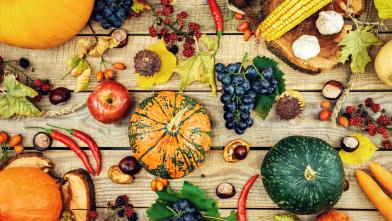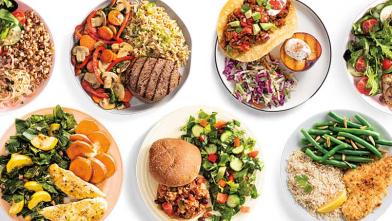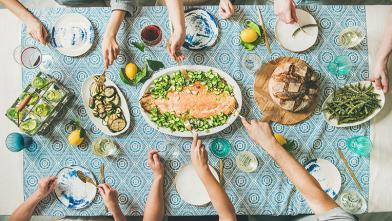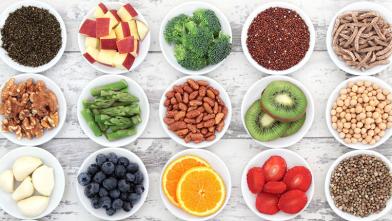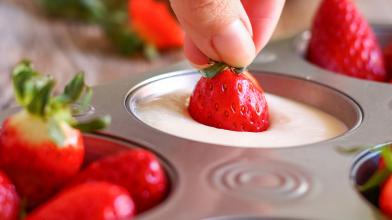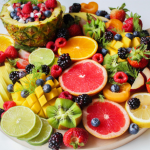
Naturally occurring sugars are found naturally in foods such as fruit and milk while added sugars can be found in sugary beverages, candy, and desserts (cakes, cookies, pies) and are put in foods during preparation or processing or at the table. As it turns out, not all sugars are created equally.
There are a lot of factors that can impact your blood glucose levels when you eat sugar. For example, what nutrients come along with the sugar, referred to as nutrient density, how slowly or quickly it’s digested, or your overall insulin sensitivity can all have an effect. Here are some natural sugar options you can use in small amounts to sweeten food and how they can impact your diabetes management.
Fruit

Eating whole, fresh or frozen fruit is the best sweetener or dessert for a person with diabetes because fruit are considered plant based, nutrient dense foods. Fruit contains fiber, that help slow the digestion of sugar, as well as antioxidants and phytonutrients which have been shown to help reduce inflammation, fight cancer, and repair damaged cells. Research shows that people who eat at least 2 servings of fruit daily have better blood sugar control and lower risk of developing type 2 diabetes. A small piece of whole fruit has about 15 grams of carbohydrate and about 3g or more of fiber depending on the fruit.
Whole fruits will be friendlier for blood sugar than fruit juice, since juice has more concentrated sugars, often contains added sugar, and does not contain the fiber of the whole fruit. All fruits are nutrient dense and when consumed in small portions, can be part of a healthy eating plan for people with Diabetes. It is recommended to eat a variety of fruits. Consider using fresh fruit in season, frozen fruit like berries, pumpkin puree, or no sugar added applesauce to make muffins or pastries. Roasting and grilling fruit like pears, apples, and peaches can enhance their sweet flavor in pies, galettes, or other recipes that call for fruit, instead of using fruit pie filling.
Dates
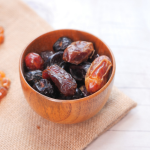
Dates are the fruit of the date palm tree and grown in many tropical regions of the world. Almost all dates sold in Western countries are dried. Dates areone of the best options for creating sweet treats. Two dates contain about 12g of carbohydrates and 1g of fiber. They are a good source of minerals like potassium, magnesium, and iron. Dates can be chopped or blended with other fruits, nuts, yogurt, and milk to add a touch of sweetness and texture to recipes. It is important to consider that the amount of dates needed to sweeten a recipe is recipe specific and that using small portions of dates is key to keeping blood glucose (blood sugar) stable.
Check out some of these diabetes-friendly date recipes:
Maple Syrup
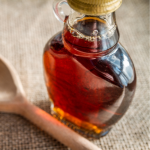
Maple syrup comes from the circulating fluid, or sap, of sugar maple trees. Unlike fruit and dates, it does not contain fiber, but it does provide polyphenols (which offer antioxidant benefits) and minerals like manganese and zinc. Real maple syrup flavor has hints of caramel, vanilla, and prune. Maple syrup contains 13g of carbohydrates in 1 tablespoon. Though it is a concentrated source of sugar, it is a more nutrient dense option compared to refined table sugar. When buying maple syrup, make sure to check the ingredient list to confirm it is real maple syrup instead of just maple-flavored syrup, which can contain high amounts of added sugar. People with diabetes should use maple syrup in small portions and in combination with other high fiber foods to best manage blood sugar.
Try these diabetes-friendly recipes that use maple syrup:
Molasses
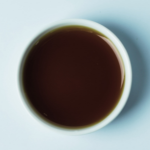
Molasses is a byproduct of the sugar-making process that comes from crushed sugar cane or sugar beets whose juice is extracted. That juice is then boiled down to form sugar crystals. Molasses is the thick, brown syrup left over after the sugar crystals are removed from the juice. Similar to maple syrup, molasses is a natural sweetener without fiber, but that contains beneficial minerals like manganese, magnesium, and copper. One tablespoon of molasses has about 15g of carbohydrates. It gives a distinct ginger-bread flavor when used in baking, but can be a sweet addition to other foods like oatmeal While it contains some nutrients, it should be used in small portions and in combination with high fiber foods to best manage blood glucose (blood sugar).
There are many other natural sweeteners, but the key to choosing a sweetener for blood glucose management is to choose nutrient dense options and to use them in small portions.









